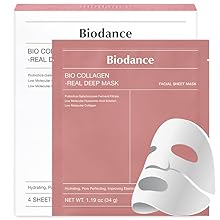
Haemoglobin isn’t used only in blood, scientists find in major discovery Premium
The Hindu
Surprising discovery of haemoglobin in chondrocytes reveals its essential role in cartilage health and opens possibilities for new treatments of joint diseases. Scientists from China found that haemoglobin bodies, or Hedy, are essential for chondrocytes' survival and may be involved in stem cell fate in the growth plate. Further research is needed to understand the role of haemoglobin in joint diseases.
Textbooks have said for decades that haemoglobin is found in the red blood cells (RBCs), that it makes blood red, carries oxygen, and is essential for our survival.
A new and serendipitous discovery has revealed that haemoglobin isn’t used by RBCs alone. In a study published in Nature, scientists from China have reported that chondrocytes – cells that make cartilage, the connecting tissue between bones – also make haemoglobin and seem to depend on it for their survival.
Feng Zhang, a pathologist in the Fourth Military Medical University in China, had been working on bone development since 2010. In 2017, when he was studying growth plates – cartilaginous tissue at the end of certain long bones that allows the bones to become longer – he stumbled upon a few spherical blob-like structures. They seemed to bear an uncanny resemblance to RBCs, and they contained haemoglobin.
Dr. Zhang then teamed up with Quiang Sun at the Beijing Institute of Biotechnology and used advanced microscopy techniques to investigate further.
Picture what happens when oil is mixed into water: the oil separates out into little globules in a process called phase separation. That’s what seemed to be happening in the chondrocytes in the cartilage as well. Dr. Zhang ascertained that the chondrocytes within the growth plates of newborn mice were not only producing large amounts of haemoglobin, but also that it was coalescing and forming large blobs without a membrane.
The scientists called these blobs haemoglobin bodies, or Hedy.
Now that they knew chondrocytes were making haemoglobin bodies, the question was: were the Hedy functional? That is, did they actually do something? To test this, the scientists used genetically modified mice, in this case mice in which the gene making haemoglobin had been removed. These mice produced almost no haemoglobin molecules and they died as embryos. But it turned out that if one looked closely at the growth plate cartilage tissue from these mice, most of the chondrocytes were dying.

The Leela Palace Chennai presents the seven edition of Shefs at The Leela in collaboration with ‘Dean With Us’ — the mother-daughter duo of Rupali and Akansha Dean. The event honours the transformative role of Indian women chefs who are shaping the future of gastronomy. After past editions hosted across Bengaluru, Gurugram, Chennai, and Jaipur, the seventh edition in Chennai will bring together four women chefs — Sambhavi Joshi, Taiyaba Ali, Sehaj Ghuman and Bunuma Patagiri, who will bring their years of expertise into curating a menu that speaks both of their work and India’s diverse culinary heritage.





















 Run 3 Space | Play Space Running Game
Run 3 Space | Play Space Running Game Traffic Jam 3D | Online Racing Game
Traffic Jam 3D | Online Racing Game Duck Hunt | Play Old Classic Game
Duck Hunt | Play Old Classic Game










